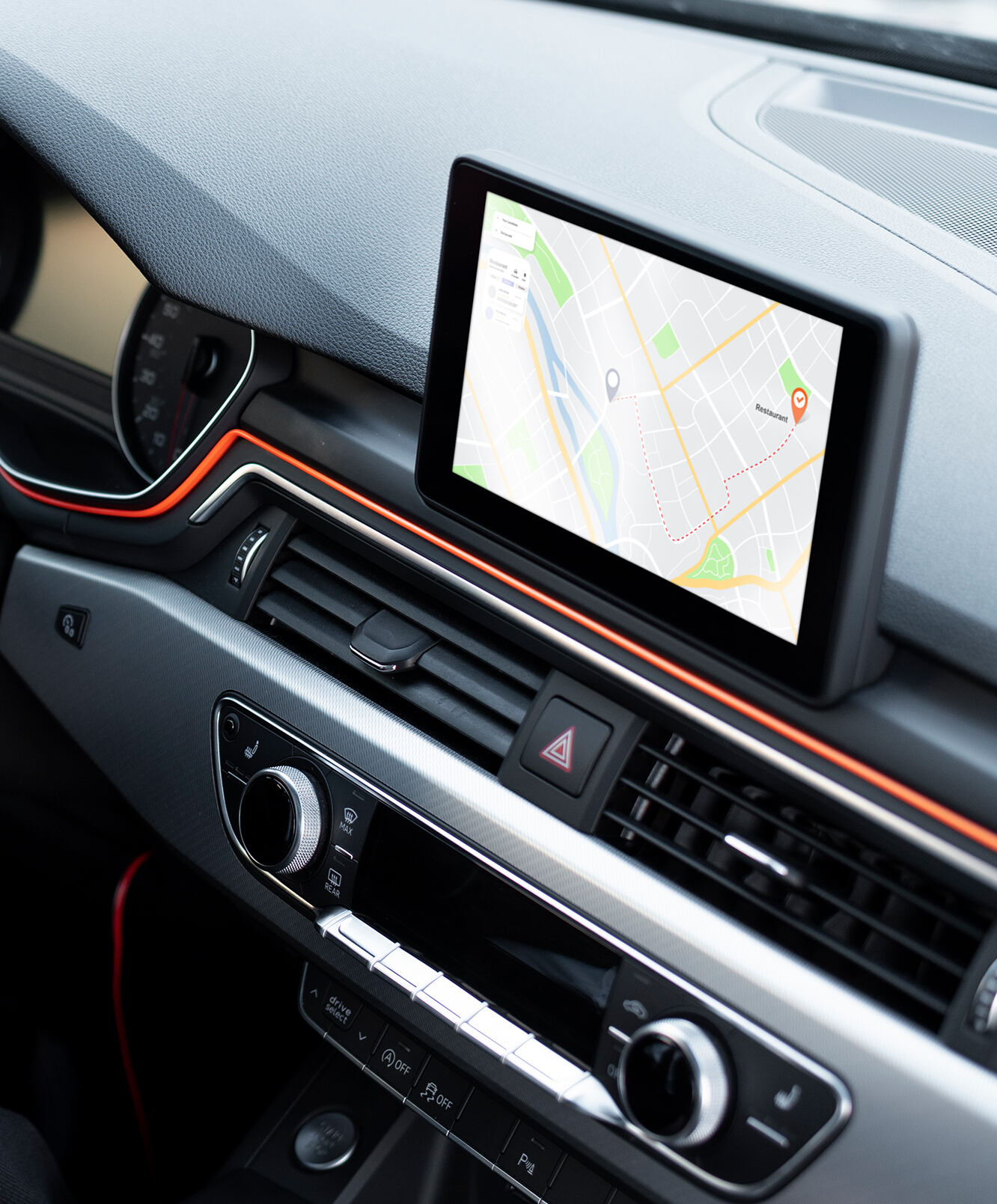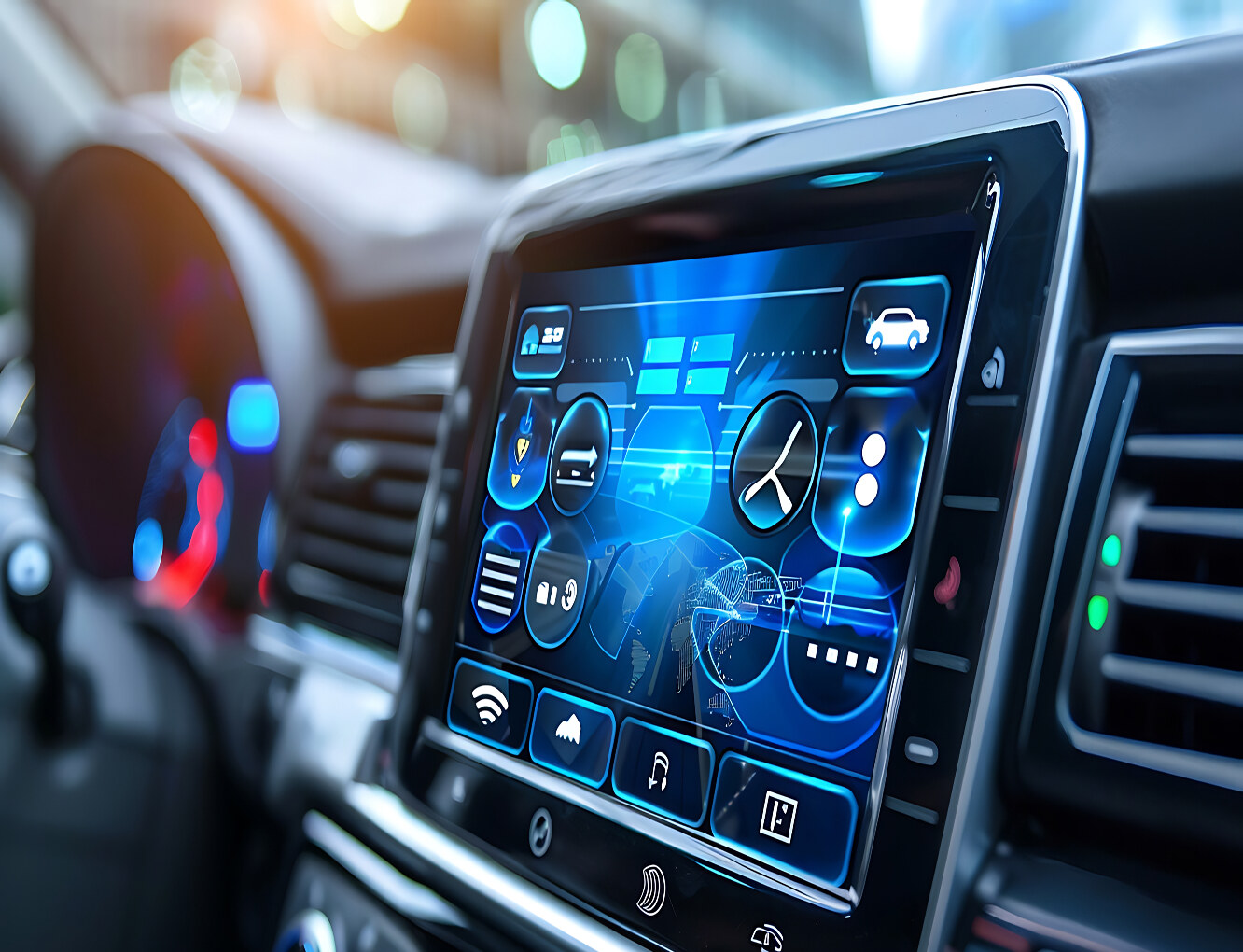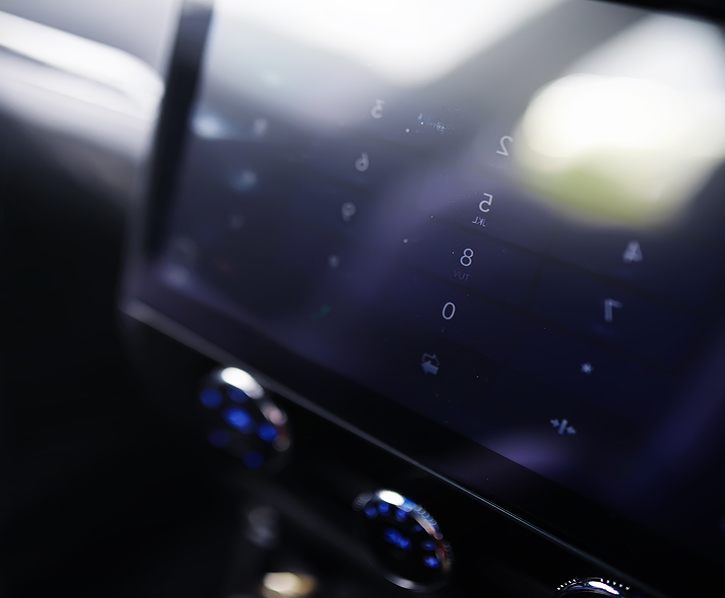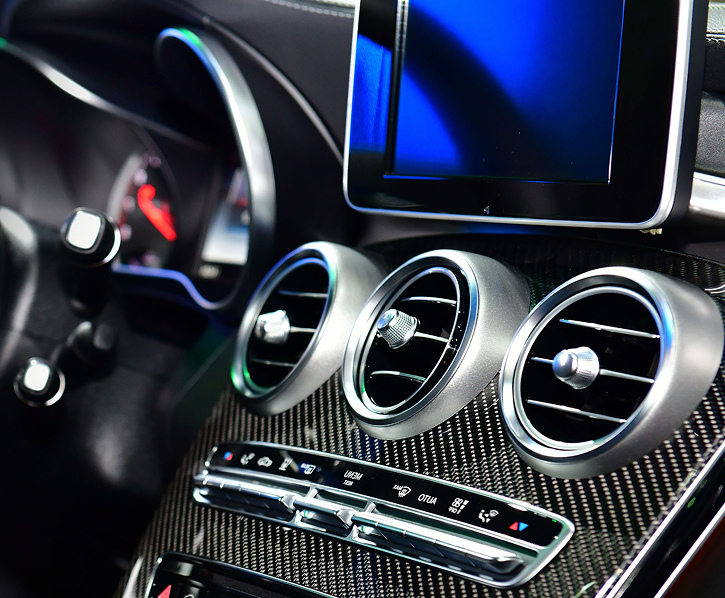
Automotive Infotainment System
Automotive Infotainment System Development


Elevate the In-Vehicle Experience with Smart Infotainment Solutions
Today’s vehicles are more than transportation, they’re connected digital ecosystems. Key features of modern infotainment systems include advanced control elements, a user friendly interface, and various features such as navigation features, radio, internet connectivity, and multimedia options. Drivers and passengers expect real-time navigation, seamless media access, smart assistants, and smartphone integration. Most vehicles today are equipped with advanced infotainment systems, and the term car refers to vehicles with integrated entertainment, information, and connectivity features. Live traffic updates are an important part of navigation features, providing real-time information to improve the driving experience. For OEMs and Tier 1 suppliers, delivering a high-quality in-vehicle infotainment system (IVI) means combining cutting-edge software, robust hardware, and compliance with global automotive standards.
At Promwad, we provide end-to-end development services for infotainment systems: from custom HMI and multimedia software to hardware design, Android Automotive integration, and support for Automotive Grade Linux (AGL). Infotainment systems are controlled through different control elements such as touchscreens, button panels, steering wheel controls, and voice commands, making user interactions central to providing features that enhance the driving experience. Our team helps clients accelerate time-to-market while meeting performance, safety, and brand requirements in a cost-effective and scalable way.

What We Offer
Embedded Software for Infotainment Platforms
- Custom UI/UX for digital cockpits and head units
- Android Automotive (AAOS) system development
- Linux-based infotainment OS using AGL or Yocto
- Media playback, voice assistants, telephony, and navigation integration
- Custom apps and third-party integrations via Android Intent API or AGL layers
- Secure OTA (over-the-air) update systems
- Support for high performance audio playback and seamless integration with legacy cd players
Hardware Design for Infotainment Modules
- SoC-based carrier boards and display controllers
- Touchscreen integration with capacitive, haptic, or gesture input
- Audio codec, DSP, and amplifier circuits for in-vehicle acoustics
- CAN/LIN, Ethernet AVB/TSN, and automotive USB integration
- EMC-compliant power supply and thermal solutions
- Design of head units and instrument clusters with embedded processors for high performance and reliability
Connectivity & Smartphone Integration
- Wireless projection (Android Auto, Apple CarPlay, MirrorLink)
- Wi-Fi 6, Bluetooth 5.3, 5G/LTE, GNSS, eCall integration
- Dual-SIM / eSIM support for connected vehicle use cases
- Secure cloud communication with MQTT, HTTPS, and remote telemetry APIs
- Integration of telematics control units (TCUs)
System Validation & Automotive Compliance
- Support for ISO 26262, ASPICE, and AUTOSAR-compliant development
- Functional safety and cybersecurity planning
- Hardware-in-the-loop (HIL) and software-in-the-loop (SIL) test environments
- EMI/EMC pre-certification testing, signal integrity analysis
- Boot time optimisation, thermal testing, and crash resiliency checks
- Validation of infotainment system work, including the operating system and integration with head up display
Key Technologies and Platforms We Support
OS Platforms
Android Automotive OS, AGL, QNX, Yocto Linux
Graphics Frameworks
Qt, Flutter, LVGL, OpenGL ES, Wayland
Middleware
GENIVI, MirrorLink, OpenXC, Automotive HAL
SoCs
NXP i.MX8, Renesas R-Car, TI Jacinto, Qualcomm Snapdragon Auto
Vehicle Networks
CAN FD, LIN, Ethernet, MOST, FlexRay
Our Development Workflow
Infotainment System Security
As infotainment systems become an integral part of connected vehicles, security has emerged as a top priority for the automotive industry. Automotive manufacturers are tasked with safeguarding these systems against a growing array of cyber threats, ensuring that both vehicle data and user privacy remain protected. Modern infotainment systems employ advanced security measures such as robust encryption protocols and secure coding practices to prevent unauthorised access and data breaches. Regular security updates and patches are essential to address newly discovered vulnerabilities and keep systems resilient against evolving threats.
Innovative technologies, including patented pupil identification technology and automotive grade image sensors, are now being leveraged to enhance security further. These solutions can monitor driver behavior and detect anomalies, adding an extra layer of protection to the vehicle’s ecosystem. As infotainment systems are increasingly integrated with critical vehicle functions like climate control and navigation, it is vital that this integration is executed with security at the forefront. By prioritising secure system design and integration, automotive manufacturers can ensure that infotainment not only delivers advanced features and connectivity but also upholds the highest standards of safety and reliability.
Infotainment System Testing and Validation
Ensuring the reliability and safety of infotainment systems requires rigorous testing and validation at every stage of development. Automotive manufacturers utilise a combination of simulation tools and real-world testing to evaluate both the underlying hardware and software of the infotainment system. This comprehensive approach helps identify and resolve potential issues before the system is deployed in vehicles.
A critical aspect of testing involves assessing the user interface, including touch screen displays and voice commands, to guarantee a user-friendly and intuitive experience. With the increasing demand for seamless integration with mobile devices, infotainment systems must also be tested for compatibility with features like smartphone mirroring and Bluetooth connectivity. This ensures that drivers and passengers can enjoy uninterrupted connectivity and access to their favorite apps and media. By thoroughly validating the integration of infotainment systems with other vehicle systems, manufacturers can deliver solutions that meet the highest standards of performance, safety, and user satisfaction.
Infotainment System Customisation and Personalisation
Modern infotainment systems are designed to offer a highly personalised in-car entertainment and connectivity experience. Drivers can create individual profiles, adjust audio and video settings, and connect a variety of external devices such as smartphones and tablets, tailoring the system to their unique preferences. Automotive manufacturers are increasingly focusing on flexibility, ensuring that infotainment systems can adapt to the diverse needs of users.
Applications and Use Cases
- Digital instrument clusters with virtual gauges and animations
- Rear-seat entertainment systems with personalised streaming
- Multi-display infotainment with driver and passenger zones
- Integrated navigation and EV route planning tools, including advanced navigation system features for real-time traffic updates and enhanced route planning
- Smart voice assistant integration (Alexa Auto, Google Assistant)
- Camera-based systems: dash cam feeds, blind spot visualisation, and driver drowsiness monitoring system that uses automotive-grade image sensors to capture infrared images of the driver's eyes. This system analyses infrared images to detect driver drowsiness or distraction, even in challenging lighting conditions or when sunglasses are worn.
- Integration of autonomous features such as AI-based virtual assistants, digital cockpits, and advanced navigation system capabilities to enhance driver assistance, safety, and overall vehicle intelligence.

Why Promwad
20 years of embedded and automotive software expertise
Cross-domain team: Linux engineers, UI designers, RF experts
Partnerships with major SoC vendors and software providers
Experience with custom infotainment systems and modular IVI platforms
Full-stack design: from HMI to connectivity to production-ready hardware
Flexible engagement: full turnkey or subsystem-level co-development
Infotainment System Standards and Regulations
Compliance with industry standards and regulations is essential in the development of infotainment systems. Automotive manufacturers must ensure that their systems adhere to a wide range of requirements, from safety and security to environmental impact. Regulations addressing distracted driving, data privacy, and vehicle emissions all influence the design and deployment of infotainment solutions.
To meet these demands, manufacturers often rely on standardised operating systems such as Android Auto and Apple CarPlay, which help ensure compatibility and regulatory compliance across different vehicle models. As technology evolves and the demand for connected and autonomous vehicles grows, standards and regulations are continually updated to reflect new challenges and opportunities. By staying ahead of regulatory changes and adopting best practices, automotive manufacturers can deliver infotainment systems that are not only innovative but also safe, reliable, and future-ready.
The Future of Automotive Infotainment
The next generation of automotive infotainment is set to transform the driving experience through the integration of cutting-edge technologies. Artificial intelligence will play a central role, enabling infotainment systems to anticipate driver needs, provide intelligent recommendations, and support advanced voice recognition for hands-free control. As vehicles move toward greater autonomy, infotainment systems will become even more closely integrated with vehicle safety features, navigation, and climate control, creating a seamless and intuitive user experience.
High-resolution touch screens, gesture controls, and enhanced connectivity solutions will become standard, offering drivers and passengers easy access to a wide range of services and entertainment options. The rise of electric and hybrid vehicles is also driving the development of more energy-efficient infotainment systems, aligning with broader environmental goals. Additionally, vehicle-to-everything (V2X) communication will enable cars to interact with other vehicles, infrastructure, and pedestrians, further enhancing safety and connectivity. As the automotive industry continues to innovate, infotainment systems will remain at the forefront, delivering advanced features and integration that redefine what’s possible on the road.
Let’s Build Your Next Infotainment Experience

Let’s turn your infotainment vision into a scalable reality!
Drop us a line about your project! We will contact you today or the next business day. All submitted information will be kept confidential.
